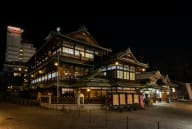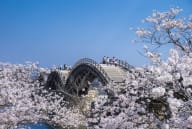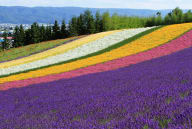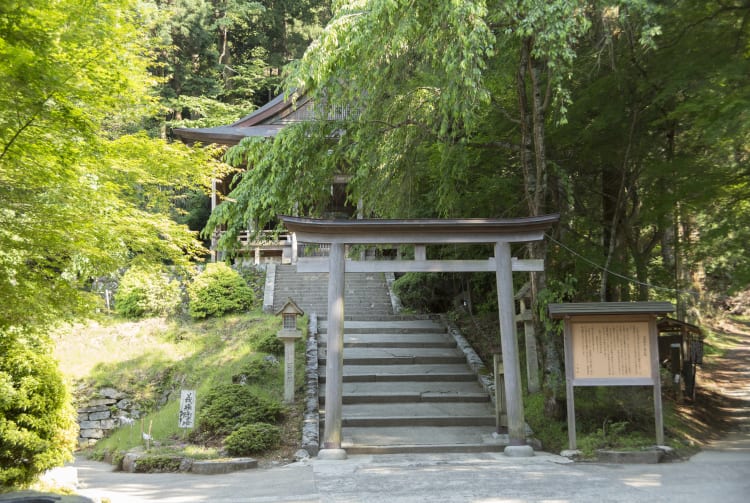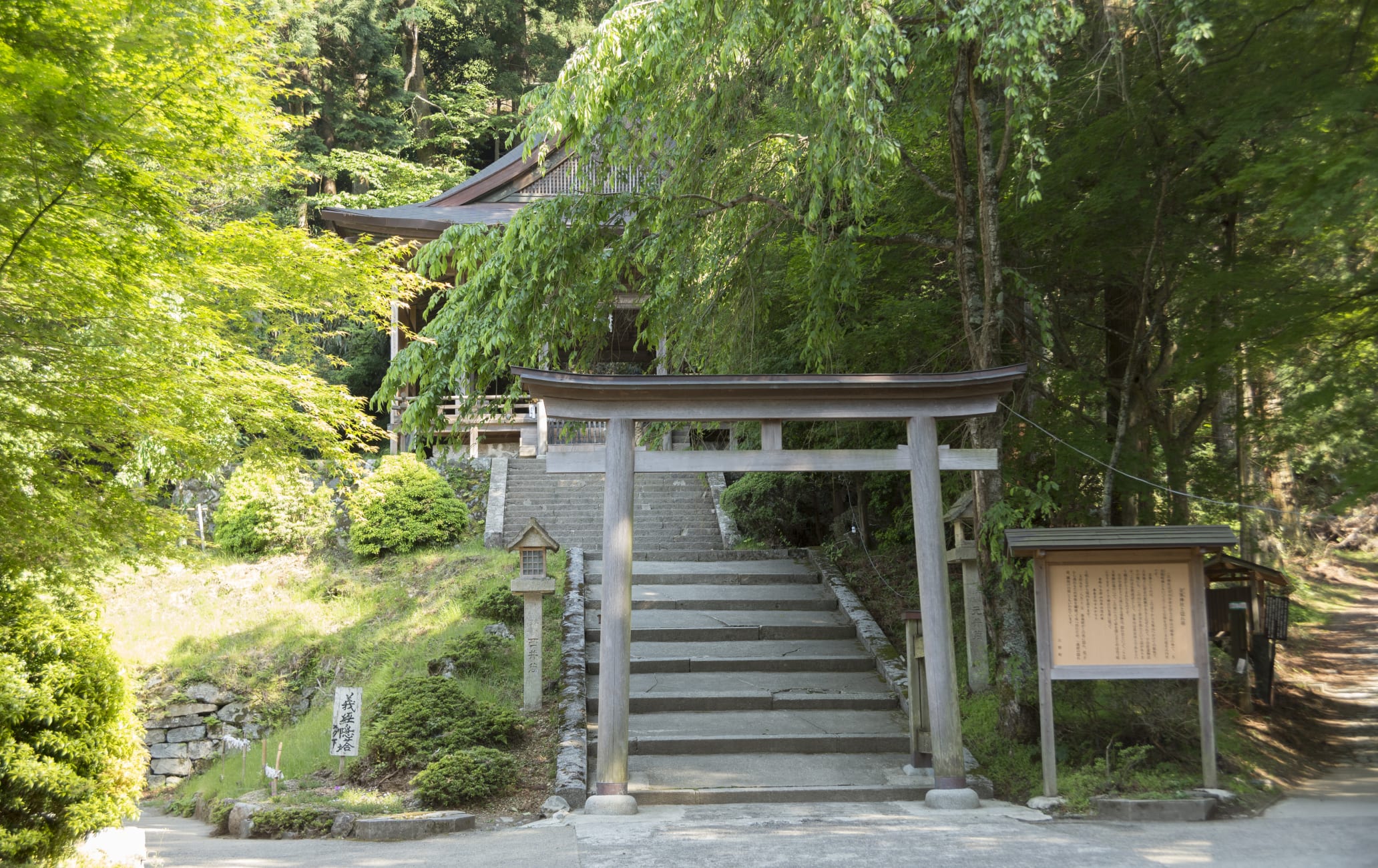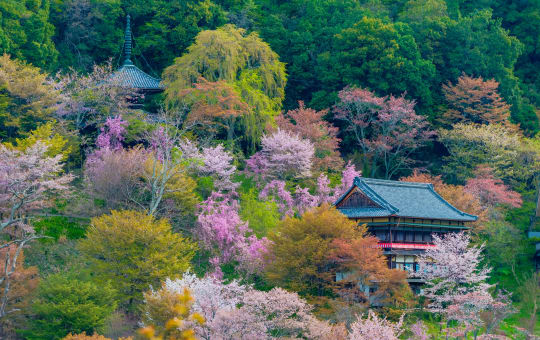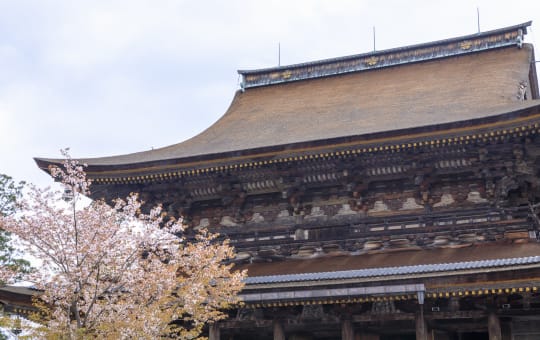Un sanctuaire dédié au dieu de l'or et une porte d'entrée pour les pèlerinages sacrés
Le sanctuaire de Kinpu-jinja est consacré au dieu du mont Yoshino , Kanayamahiko-no-mikoto, le saint patron des mines d'or et des mineurs.
Comment s'y rendre
Vous pouvez vous y rendre en 30 minutes en voiture depuis Yoshinoyama, la station supérieure de téléphérique de Yoshino.
Fleurs printanières et cèdres anciens
Profitez d'un cadre paisible sur le chemin du sanctuaire de Kinpu-jinja. De vieux cèdres japonais dominent la forêt, et les arbres et les buissons fleurissants arborent de magnifiques couleurs aux différentes saisons. Les visiteurs se précipitent pour voir les cerisiers en fleurs au mois de mars et avril.
La porte d'entrée des pèlerinages ascétiques
Le sanctuaire de Kinpu-jinja est utilisé pour l'entraînement des ascétiques depuis l'époque d'Edo (1603-1867) et sert toujours ce but aujourd'hui. La branche religieuse associée à ce sanctuaire est l'ascétisme montagnard Shugendo. Les gens sont formés et prient ici avant d'entreprendre de longs pèlerinages. La région est inscrite au patrimoine mondial de l'Unesco dans le cadre de ces chemins de pèlerinage.
La cérémonie de purification
Vous pouvez participer à l'une de ces pratiques ascétiques pour une somme modique. Les cérémonies de purification ont lieu à l'intérieur de la pagode Kakureto. C'est l'une des rares occasions d'entrer dans la pagode d'un sanctuaire, donc si vous êtes prêt à relever le défi, foncez, c'est une expérience unique. La cérémonie se déroule uniquement en japonais, il est donc nécessaire d'avoir des connaissances linguistiques ou d'avoir un guide.
La légende de l'évasion de Yoshitsune
Ce sanctuaire abrite une légende historique. Selon la légende, le frère de Minamoto Yoshitsune, guerrier du XIIe siècle, était jaloux de la puissance et de la popularité de Minamoto et le chassa jusqu'à ce sanctuaire.
Ce dernier se cacha dans cette pagode pendant un moment. Après cela, la pagode fut nommée « Kakureto » ou la « pagode cachette ». On ne sait pas s'il réussit ou non à échapper aux serviteurs de son frère. La pagode actuelle est une reconstruction mais illustre toujours cette légende.
















